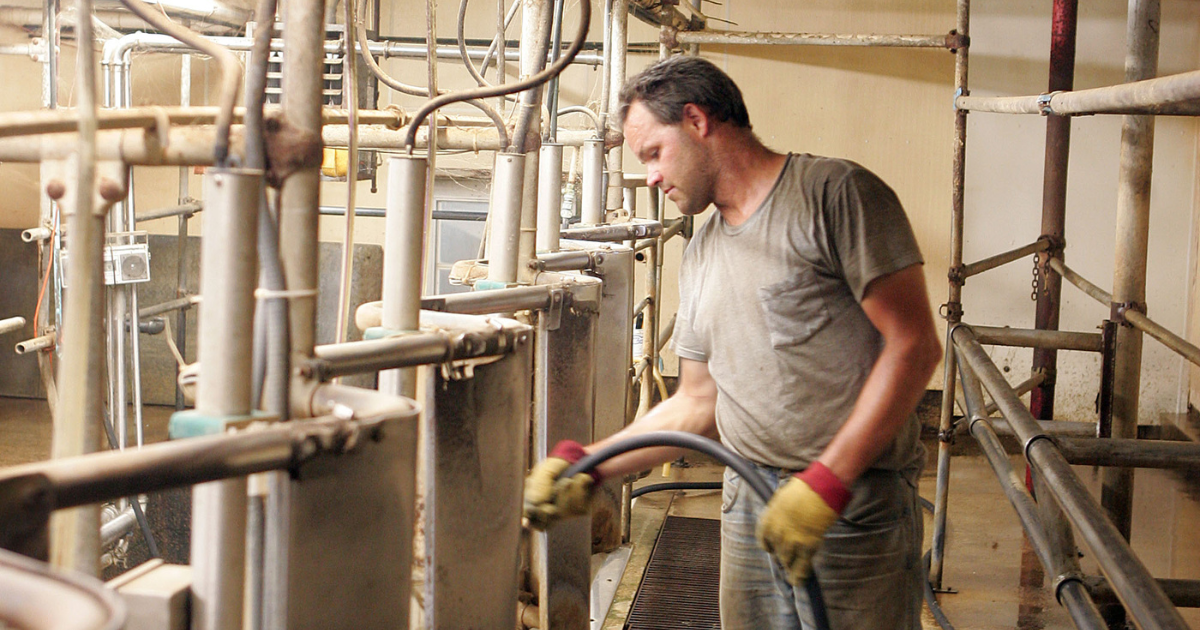Report on Delayed EPA Findings Regarding PFNA Water Contamination and Sustainable Development Goal Implications
1.0 Introduction
A finalized U.S. Environmental Protection Agency (EPA) report on the toxicity of perfluorononanoic acid (PFNA), a type of per- and polyfluoroalkyl substance (PFAS), has been withheld from public release since its completion in April. This delay has prompted an official inquiry from Representative Chellie Pingree, raising significant concerns about public health, institutional transparency, and the nation’s commitment to achieving key Sustainable Development Goals (SDGs), particularly SDG 3 (Good Health and Well-being) and SDG 6 (Clean Water and Sanitation).
2.0 Background: PFAS Contamination and Public Health
2.1 The Threat of “Forever Chemicals”
PFAS, often called “forever chemicals” due to their environmental persistence, are man-made substances found in numerous consumer and industrial products. Their widespread use has led to significant environmental contamination.
- PFAS leach into soil and water supplies during their breakdown process and through improper disposal.
- A 2023 U.S. Geological Survey study found PFAS in nearly half of U.S. household tap water, indicating a systemic failure to protect water resources.
- The withheld EPA report reportedly concludes that PFNA exposure can cause severe health issues, including developmental, liver, and reproductive harm.
2.2 Direct Impact on Sustainable Development Goals
The issue of PFAS contamination directly undermines progress on several SDGs:
- SDG 3: Good Health and Well-being: The presence of toxic chemicals like PFNA in drinking water poses a direct threat to human health, contradicting the goal of ensuring healthy lives for all.
- SDG 6: Clean Water and Sanitation: Widespread contamination compromises the availability and sustainable management of safe water, a core target of this goal.
- SDG 12: Responsible Consumption and Production: The “polluter pays” principle, which the EPA has previously supported, is central to holding industries accountable for the lifecycle of their products and is a key component of sustainable production patterns.
3.0 Institutional Accountability and Transparency Concerns
3.1 Delayed Report and Official Inquiry
Representative Pingree formally requested an explanation from EPA Administrator Lee Zeldin on October 16 regarding the withheld PFNA risk assessment. The inquiry highlights a potential breakdown in institutional responsibility, a critical aspect of SDG 16 (Peace, Justice and Strong Institutions).
Key questions raised in the letter include:
- The reason for the delay in the report’s publication.
- Identification of the party responsible for the delay.
- A commitment to publish future scientific assessments from the Integrated Risk Information System (IRIS) program without political interference.
3.2 Allegations of Political Interference
Concerns have been raised that the delay is part of a broader pattern of interference with the EPA’s scientific work, particularly the IRIS program. Representative Pingree’s letter notes that the delay coincided with the EPA’s decision to rescind certain Safe Drinking Water Act regulations concerning PFAS. This action appears to contradict the EPA’s stated mission and its role as a strong institution responsible for public and environmental protection (SDG 16).
4.0 Path Forward and Implications for SDG Achievement
4.1 Contradictory Stances and Policy Implications
The EPA’s delay in releasing the PFNA report contrasts sharply with Administrator Zeldin’s April announcement to aggressively tackle PFAS contamination and hold polluters accountable. This inconsistency threatens the credibility of regulatory bodies and hampers effective policy-making aimed at protecting public health and water resources.
4.2 Future Outlook
The release of the PFNA toxicity report is a critical step for several reasons:
- It will inform federal, state, and local regulatory actions necessary to protect drinking water, advancing SDG 6.
- It will provide the public with vital health information, empowering communities and supporting the objectives of SDG 3.
- It will test the commitment of the EPA to transparent, science-based governance, which is fundamental to the integrity of public institutions as outlined in SDG 16.
The resolution of this issue will significantly influence future policies on chemical safety and the nation’s ability to meet its commitments to clean water and public health.
Analysis of Sustainable Development Goals in the Article
1. Which SDGs are addressed or connected to the issues highlighted in the article?
-
SDG 3: Good Health and Well-being
The article directly connects to SDG 3 by discussing the public health threats posed by chemical contamination. It highlights that the delayed EPA report on perfluorononanoic acid (PFNA) concluded that the chemical can cause “developmental, liver, and reproductive harm, such as lower birth weights, reduced testosterone, and diminished sperm levels.” This focus on illnesses resulting from environmental pollution is a core component of SDG 3.
-
SDG 6: Clean Water and Sanitation
This is a central theme of the article. The entire issue revolves around a “drinking water report” and the contamination of the water supply by PFAS, also known as “forever chemicals.” The text explicitly states that “PFAS can leach into the soil and water supply” and cites a U.S. Geological Survey study finding that “PFAS are present in the tap water of nearly half of U.S. homes,” directly addressing the goal of ensuring safe drinking water.
-
SDG 12: Responsible Consumption and Production
The article addresses SDG 12 by discussing the source and lifecycle of PFAS chemicals. It mentions they are “man-made chemicals found in everyday items like non-stick cookware, firefighting foams, grease-resistant food wrappers, [and] water-resistant clothing.” The problem of these chemicals leaching into the environment during their breakdown process or when products containing them are disposed of relates to the environmentally sound management of chemicals and waste throughout their life cycle.
-
SDG 16: Peace, Justice and Strong Institutions
The article strongly relates to SDG 16 through its focus on institutional accountability, transparency, and access to information. The primary conflict is the EPA, a government institution, withholding a finalized scientific report from the public. Representative Chellie Pingree’s letter demands to know “why the report has yet to be released and who is responsible for its delay,” highlighting a “growing pattern of interference with the Agency’s scientific work” and calling for the EPA to publish assessments “without political interference.” This directly concerns the development of effective, accountable, and transparent institutions and ensuring public access to information.
2. What specific targets under those SDGs can be identified based on the article’s content?
-
SDG 3: Good Health and Well-being
- Target 3.9: “By 2030, substantially reduce the number of deaths and illnesses from hazardous chemicals and air, water and soil pollution and contamination.” The article’s focus on the health risks of PFNA in drinking water—specifically “developmental, liver, and reproductive harm”—directly aligns with this target of reducing illness from chemical contamination.
-
SDG 6: Clean Water and Sanitation
- Target 6.1: “By 2030, achieve universal and equitable access to safe and affordable drinking water for all.” The finding that “PFAS are present in the tap water of nearly half of U.S. homes” demonstrates a failure to provide safe drinking water, making this target highly relevant.
- Target 6.3: “By 2030, improve water quality by reducing pollution, eliminating dumping and minimizing release of hazardous chemicals and materials…” The article describes how PFAS “leach into the soil and water supply” and threaten it when products are “dumped onto the ground or into lakes and rivers.” The EPA’s plan to create “effluent limitations guidelines (ELGs) for certain PFAS to stop the forever chemicals from entering drinking water systems” is a direct action toward achieving this target.
-
SDG 12: Responsible Consumption and Production
- Target 12.4: “By 2020, achieve the environmentally sound management of chemicals and all wastes throughout their life cycle… and significantly reduce their release to air, water and soil in order to minimize their adverse impacts on human health and the environment.” The discussion of “forever chemicals” from everyday products contaminating water and the EPA’s efforts to establish a “liability framework that ensures the polluter pays” are central to this target.
-
SDG 16: Peace, Justice and Strong Institutions
- Target 16.6: “Develop effective, accountable and transparent institutions at all levels.” The core of the article is the challenge to the EPA’s lack of transparency in withholding the PFNA report. Representative Pingree’s actions are an attempt to hold the agency accountable for its delay and alleged “political interference.”
- Target 16.10: “Ensure public access to information and protect fundamental freedoms, in accordance with national legislation and international agreements.” The refusal to release the finalized drinking water report is a direct violation of the principle of public access to information, which is crucial for public health and safety.
3. Are there any indicators mentioned or implied in the article that can be used to measure progress towards the identified targets?
-
For SDG 3 (Target 3.9):
- Implied Indicator: The article implies the need for indicators such as the incidence of specific health conditions (developmental, liver, reproductive) linked to PFNA exposure in affected populations. The delayed report itself is presented as a tool that would provide the scientific basis for measuring these health impacts.
-
For SDG 6 (Targets 6.1 & 6.3):
- Mentioned Indicator: The article explicitly mentions a quantitative indicator related to Target 6.1: the proportion of the population using safely managed drinking water services. The statistic from the U.S. Geological Survey that “PFAS are present in the tap water of nearly half of U.S. homes” serves as a direct measurement for this indicator.
- Implied Indicator: The EPA’s plan to create “effluent limitations guidelines (ELGs)” implies an indicator related to Target 6.3, which would be the level of chemical pollutants (PFAS/PFNA) measured in water bodies and drinking water systems.
-
For SDG 12 (Target 12.4):
- Implied Indicator: Progress towards this target could be measured by the number and enforcement of regulations on hazardous chemicals, such as the EPA’s proposed ELGs and the establishment of a “clear liability framework that ensures the polluter pays.”
-
For SDG 16 (Targets 16.6 & 16.10):
- Implied Indicator: A key performance indicator for institutional transparency is the timely public release of government scientific reports and data. The entire article is based on the failure to meet this indicator, as the PFNA report was “finalized in mid-April” but “has yet to be released to the public” as of October.
4. Table of SDGs, Targets, and Indicators
| SDGs | Targets | Indicators |
|---|---|---|
| SDG 3: Good Health and Well-being | 3.9: Substantially reduce illnesses from hazardous chemicals and water pollution. | (Implied) Incidence of developmental, liver, and reproductive harm linked to PFNA exposure. |
| SDG 6: Clean Water and Sanitation | 6.1: Achieve universal access to safe drinking water. | (Mentioned) Proportion of the population with contaminated tap water (e.g., “nearly half of U.S. homes”). |
| 6.3: Improve water quality by reducing pollution and release of hazardous chemicals. | (Implied) Concentration levels of PFAS/PFNA in drinking water systems. | |
| SDG 12: Responsible Consumption and Production | 12.4: Achieve environmentally sound management of chemicals and wastes. | (Implied) Implementation and enforcement of regulations like effluent limitations and “polluter pays” frameworks. |
| SDG 16: Peace, Justice and Strong Institutions | 16.6: Develop effective, accountable, and transparent institutions. | (Implied) Timely public release of government scientific assessments. |
| 16.10: Ensure public access to information. | (Implied) Number and duration of delays in publishing finalized public interest reports. |
Source: newsweek.com







